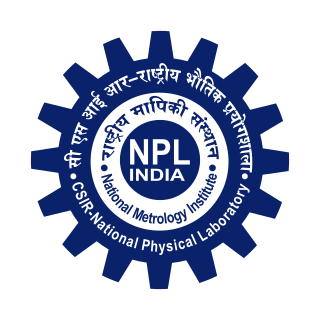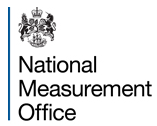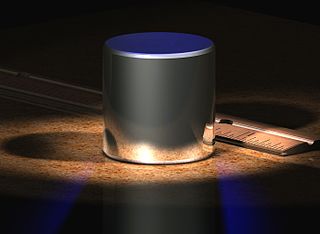Calibration sections
Typically electronic test equipment is maintained in different calibration sections (K-Sections). The technicians who work in the PMEL will often specialize in one of these sections. The K-Sections are derived from the primary function of the TMDE. This is based upon the calibration authority.
Most labs have three calibration sections divided into K1/K8, K5/K6 and K3/K4 that specialize in like test equipment. For example, the K3/K4 section would maintain Frequency counter, Oscilloscope, Synthesized Signal Generator and power sensor. While K1/K8 would maintain digital multimeter, high voltage probe and resistance standards. Lastly K5/K6 would deal with truck scales, pressure gauges, optics and micrometers.
The sections are as follows:
K1, K2, K8 DC/Electrical Standards Section
K3, K4 Frequency/RF Section
K5 Temperature/Humidity
K6, Physical Dimensional Test Equipment
K7, RADIAC
Instrumentation is a collective term for measuring instruments, used for indicating, measuring, and recording physical quantities. It is also a field of study about the art and science about making measurement instruments, involving the related areas of metrology, automation, and control theory. The term has its origins in the art and science of scientific instrument-making.
In measurement technology and metrology, calibration is the comparison of measurement values delivered by a device under test with those of a calibration standard of known accuracy. Such a standard could be another measurement device of known accuracy, a device generating the quantity to be measured such as a voltage, a sound tone, or a physical artifact, such as a meter ruler.

Metrology is the scientific study of measurement. It establishes a common understanding of units, crucial in linking human activities. Modern metrology has its roots in the French Revolution's political motivation to standardise units in France when a length standard taken from a natural source was proposed. This led to the creation of the decimal-based metric system in 1795, establishing a set of standards for other types of measurements. Several other countries adopted the metric system between 1795 and 1875; to ensure conformity between the countries, the Bureau International des Poids et Mesures (BIPM) was established by the Metre Convention. This has evolved into the International System of Units (SI) as a result of a resolution at the 11th General Conference on Weights and Measures (CGPM) in 1960.

The red telephone box is a telephone kiosk for a public telephone designed by Sir Giles Gilbert Scott, the architect responsible for Liverpool Cathedral.

A hygrometer is an instrument which measures the humidity of air or some other gas: that is, how much of it is water vapor. Humidity measurement instruments usually rely on measurements of some other quantities such as temperature, pressure, mass, and mechanical or electrical changes in a substance as moisture is absorbed. By calibration and calculation, these measured quantities can be used to indicate the humidity. Modern electronic devices use the temperature of condensation, or they sense changes in electrical capacitance or resistance.
AFMETCAL, located in Heath, Ohio is the primary manager of metrology services for the U.S. Air Force. It retains engineering authority for all calibrations performed in the PMEL labs throughout the Air Force, and oversees the contractor managed and operated Air Force Primary Standards Lab (AFPSL). It currently operates as a direct reporting unit of the Air Force Life Cycle Management Center for Wright-Patterson AFB, Wright-Patterson, OH.

Odendaalsrus is the oldest gold mining town in the Lejweleputswa District Municipality in the goldfields of the Free State province in South Africa.
The Air Force Specialty Code (AFSC) is an alphanumeric code used by the United States Air Force to identify a specific job. Officer AFSCs consist of four characters and enlisted AFSCs consist of five characters. A letter prefix or suffix may be used with an AFSC when more specific identification of position requirements and individual qualifications is necessary. The AFSC is similar to the Military Occupational Specialty Codes used by the United States Army and the United States Marine Corps or enlisted ratings and USN officer designators and Naval Officer Billet Classifications (NOBCs) used by the United States Navy and enlisted ratings and USCG officer specialties used by the United States Coast Guard. The United States Space Force equivalent is known as the Space Force Specialty Code (SFSC).
A load cell converts a force such as tension, compression, pressure, or torque into a signal that can be measured and standardized. It is a force transducer. As the force applied to the load cell increases, the signal changes proportionally. The most common types of load cells are pneumatic, hydraulic, and strain gauge types for industrial applications. Typical non-electronic bathroom scales are a widespread example of a mechanical displacement indicator where the applied weight (force) is indicated by measuring the deflection of springs supporting the load platform, technically a "load cell".

The CSIR- National Physical Laboratory of India, situated in New Delhi, is the measurement standards laboratory of India. It maintains standards of SI units in India and calibrates the national standards of weights and measures.

A network analyzer is an instrument that measures the network parameters of electrical networks. Today, network analyzers commonly measure s–parameters because reflection and transmission of electrical networks are easy to measure at high frequencies, but there are other network parameter sets such as y-parameters, z-parameters, and h-parameters. Network analyzers are often used to characterize two-port networks such as amplifiers and filters, but they can be used on networks with an arbitrary number of ports.

Aitchison College is an independent, semi-private boys school for boarding and day students from grade 1–13 in Lahore, Pakistan. It has a tradition of providing an education that uses academics, sports, and co-curricular activities as tools for character development. The school follows a curriculum designed to culminate in the International General Certificate of Education and AS Level/A Level qualifications and is geared towards preparing students for university education. The institute is the only Pakistani school that is a member of the G30 Schools of the World.Aitchison College is also the only school in Pakistan's history to be listed in the Carfax ranking of the top 125 institutions of the world Aitchison has educated former Prime Ministers of Pakistan, including Imran Khan, Feroz Khan Noon and former President Farooq Leghari, as well as lawyers, cricketers, and politicians.

The National Measurement and Regulation Office (NMRO) was an executive agency of the UK Government's Department for Business, Innovation and Skills (BIS). Its function were to provide a measurement infrastructure which supports innovation, facilitates fair competition, promotes international trade and protects consumers and the environment.
A potentiometer is an instrument for measuring voltage or 'potential difference' by comparison of an unknown voltage with a known reference voltage. If a sensitive indicating instrument is used, very little current is drawn from the source of the unknown voltage. Since the reference voltage can be produced from an accurately calibrated voltage divider, a potentiometer can provide high precision in measurement. The method was described by Johann Christian Poggendorff around 1841 and became a standard laboratory measuring technique.

Otoyol 4, named Anatolian Motorway and abbreviated as O-4, is a toll motorway connecting the northwestern Marmara Region to the Central Anatolia Region in Turkey. It runs parallel to the D.100 for more than half of its length and then parallels the D750 for most of the eastern half. The O-4 is a major expressway in Turkey as it connects eastern Istanbul and the heavily urbanized northeastern shore of the Sea of Marmara to the nation's capital, Ankara. The O-4 also makes up part of the International E-road network E80 and E89 as well as the AH-1 of the Asian Highway Network.

The International Prototype of the Kilogram is an object whose mass was used to define the kilogram from 1889, when it replaced the Kilogramme des Archives, until 2019, when it was replaced by a new definition of the kilogram based entirely on physical constants. During that time, the IPK and its duplicates were used to calibrate all other kilogram mass standards on Earth.
Churning is an encryption function used to scramble downstream user data of the ATM passive optical network system defined by the ITU G.983.1 standard.

In metrology, a standard is an object, system, or experiment that bears a defined relationship to a unit of measurement of a physical quantity. Standards are the fundamental reference for a system of weights and measures, against which all other measuring devices are compared. Historical standards for length, volume, and mass were defined by many different authorities, which resulted in confusion and inaccuracy of measurements. Modern measurements are defined in relationship to internationally standardized reference objects, which are used under carefully controlled laboratory conditions to define the units of length, mass, electrical potential, and other physical quantities.
A shop-replaceable unit (SRU) or shop-replaceable component (SRC) is a modular component of an airplane, ship or spacecraft that is designed to be replaced by a technician at a backshop. Repair at backshops is known as field-level maintenance or intermediate-level (I-level) maintenance.

From the beginning of 2015, the Centre for Metrology (MIKES) (Finnish: Mittatekniikan keskus; Swedish: Mätteknikcentralen) formerly the Centre for Metrology and Accreditation has been part of VTT Technical Research Centre of Finland Ltd. As the National Metrology Institute of Finland, MIKES is responsible for the implementation and development of the national measurement standards system and realisation of the SI units in Finland. MIKES designates other National Standards Laboratories in Finland. Moreover, MIKES performs research in metrology, i.e., in measurement science. MIKES’s customers include both Finnish and international companies as well as the public sector. Other national metrology institutes are for example PTB (Germany), NPL (UK), NMIJArchived 2012-11-08 at the Wayback Machine (Japan), NIST (USA), and Główny Urząd Miar (Poland). As a part of VTT MIKES operates under the administrative domain of the Ministry of Employment and the Economy.











